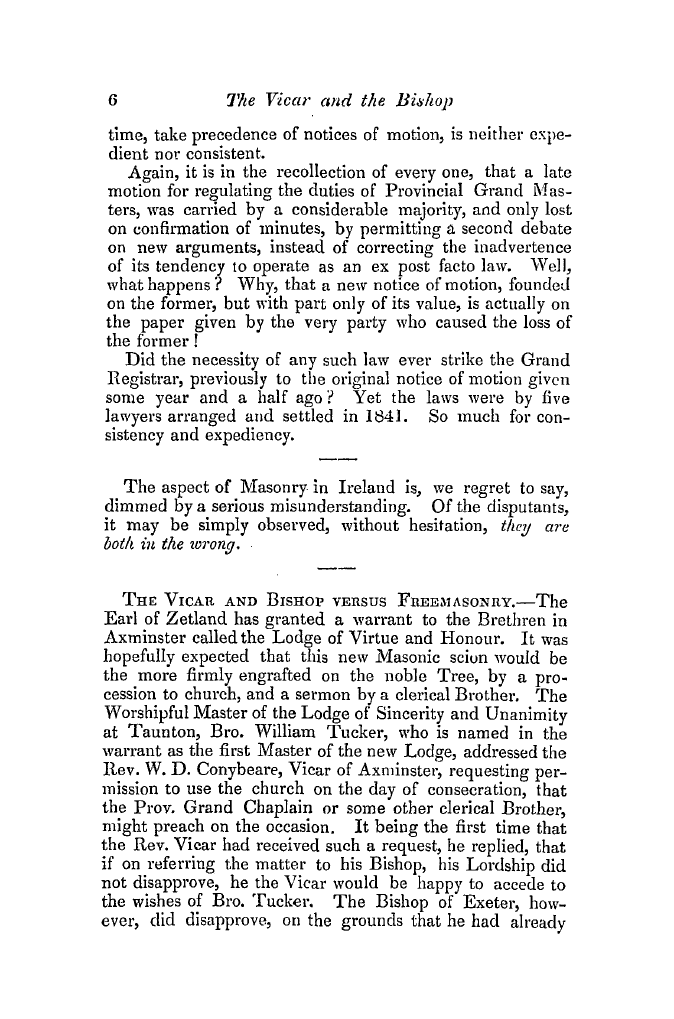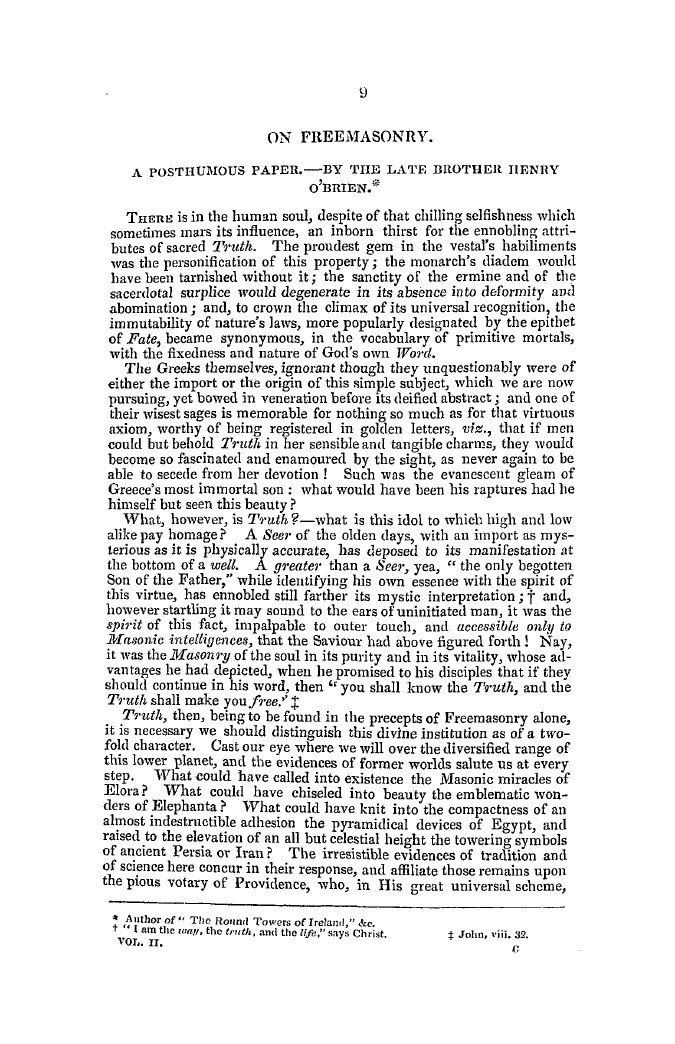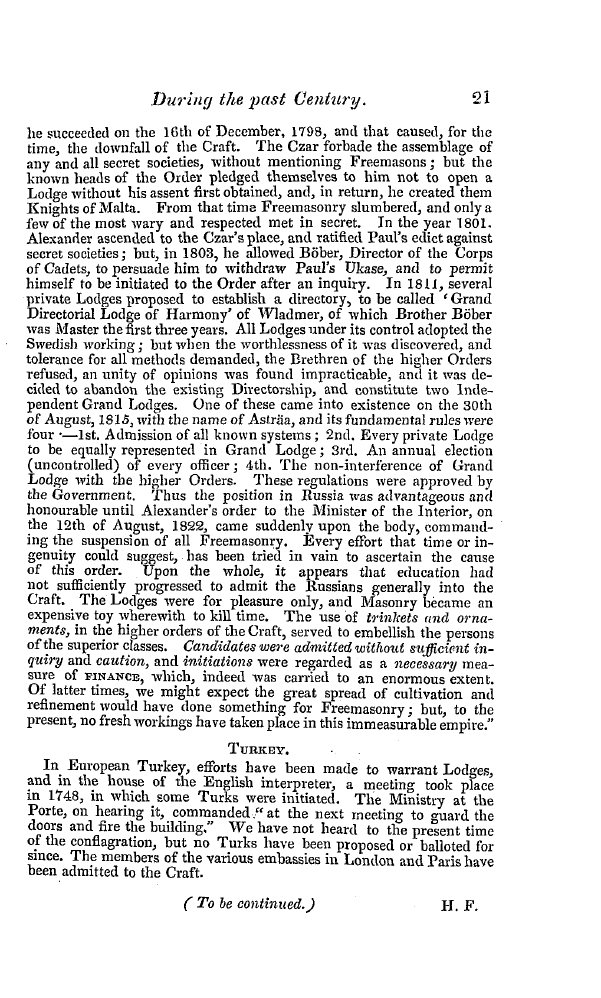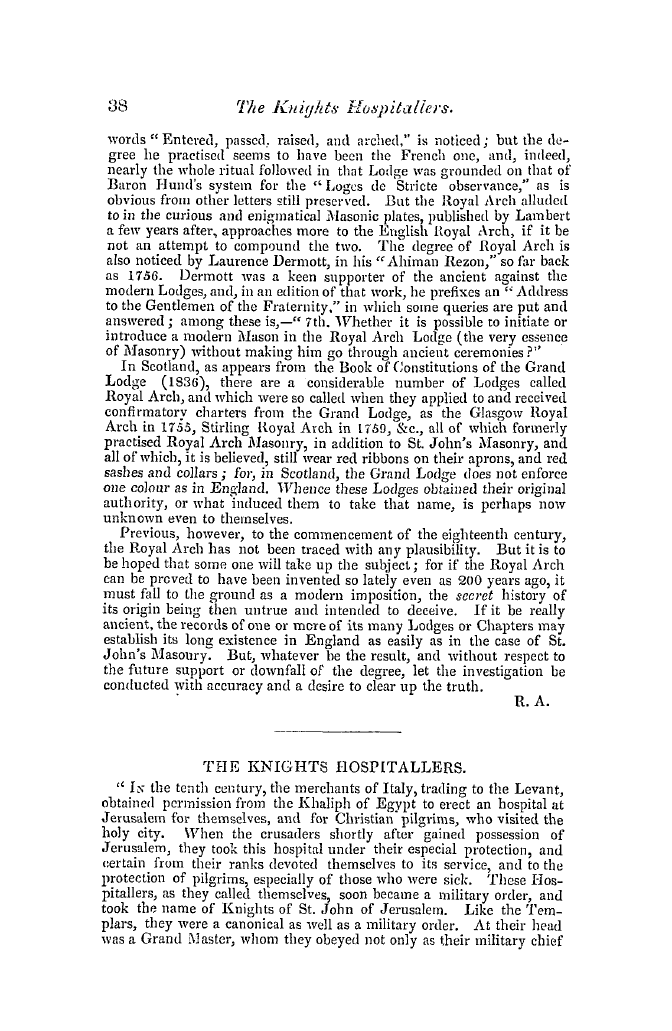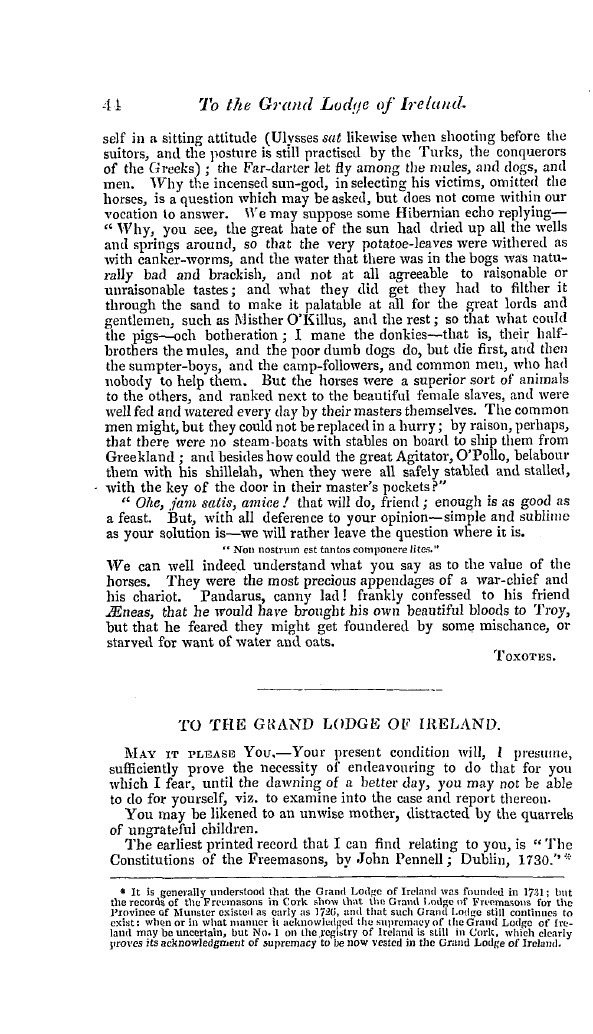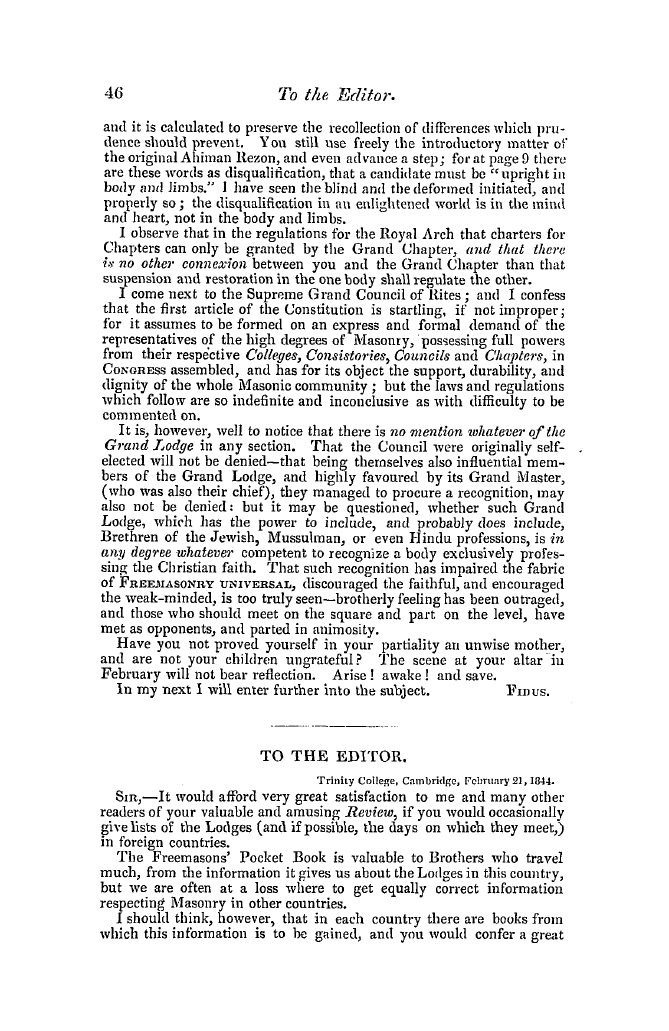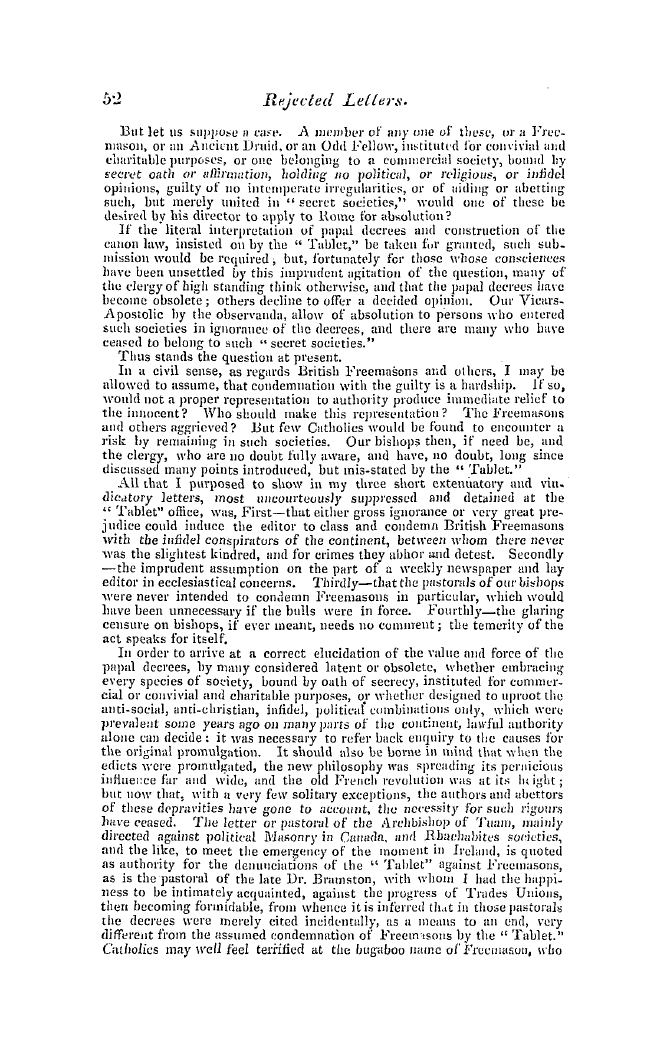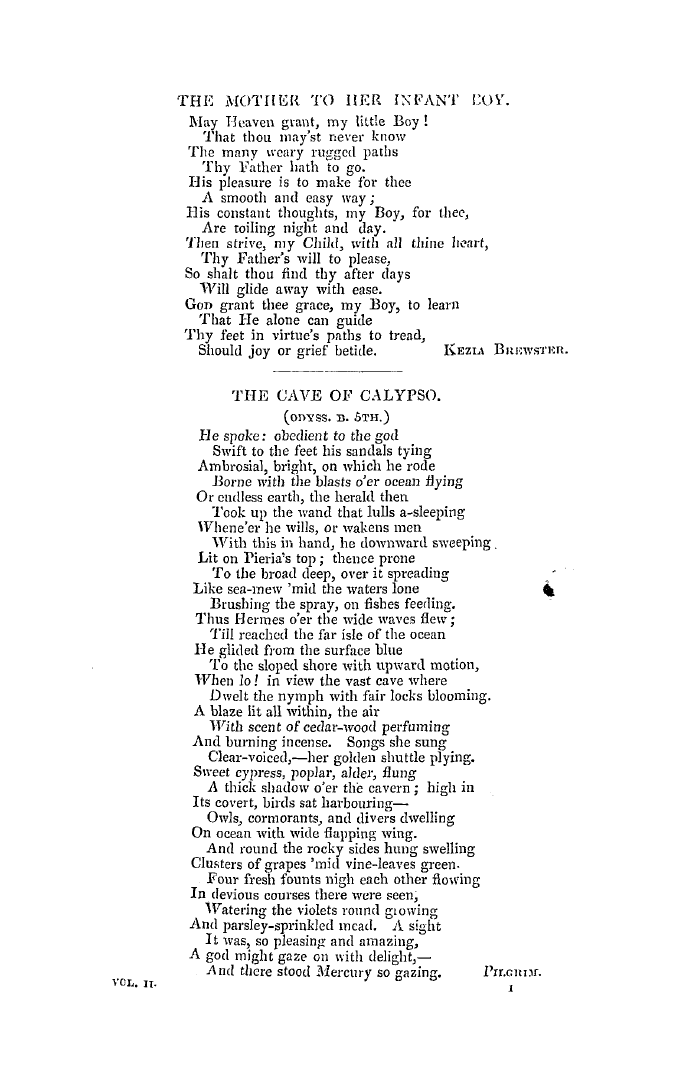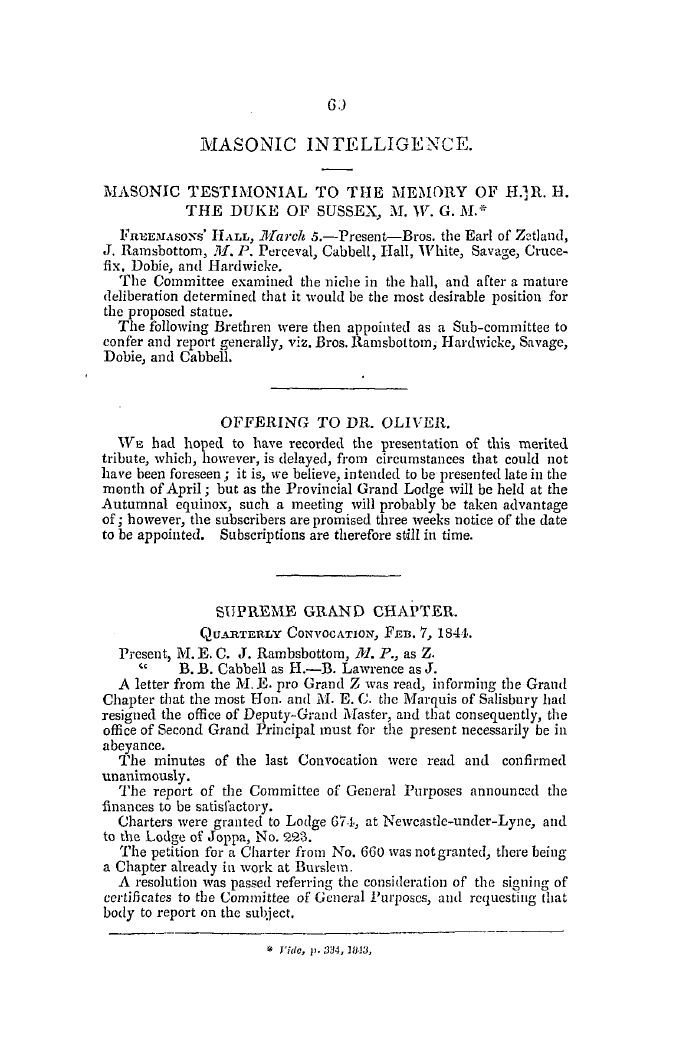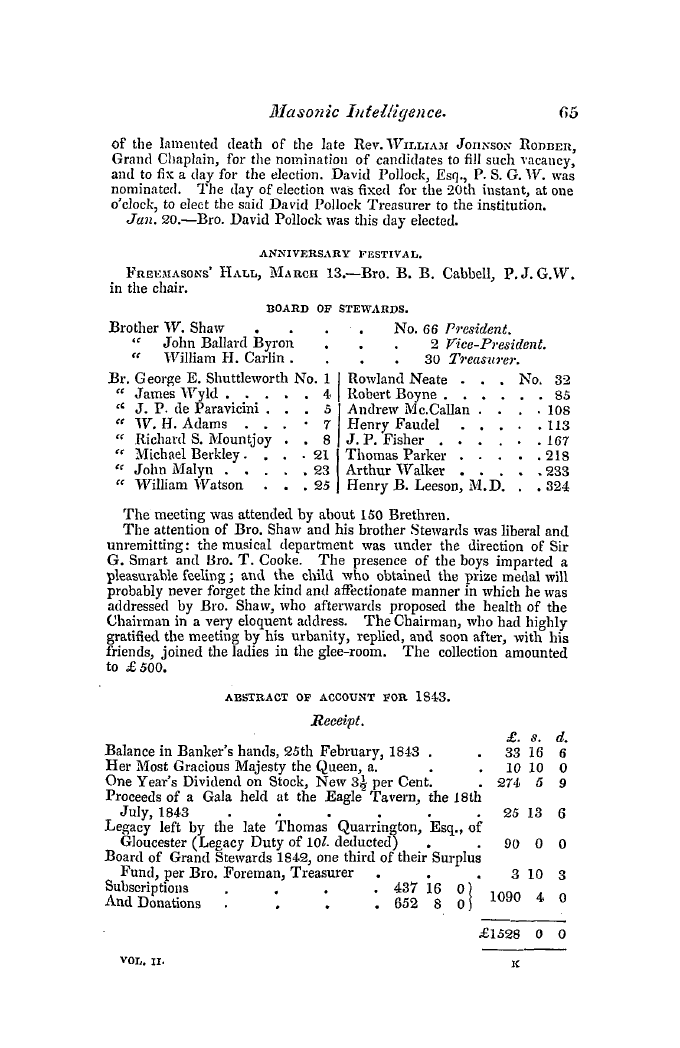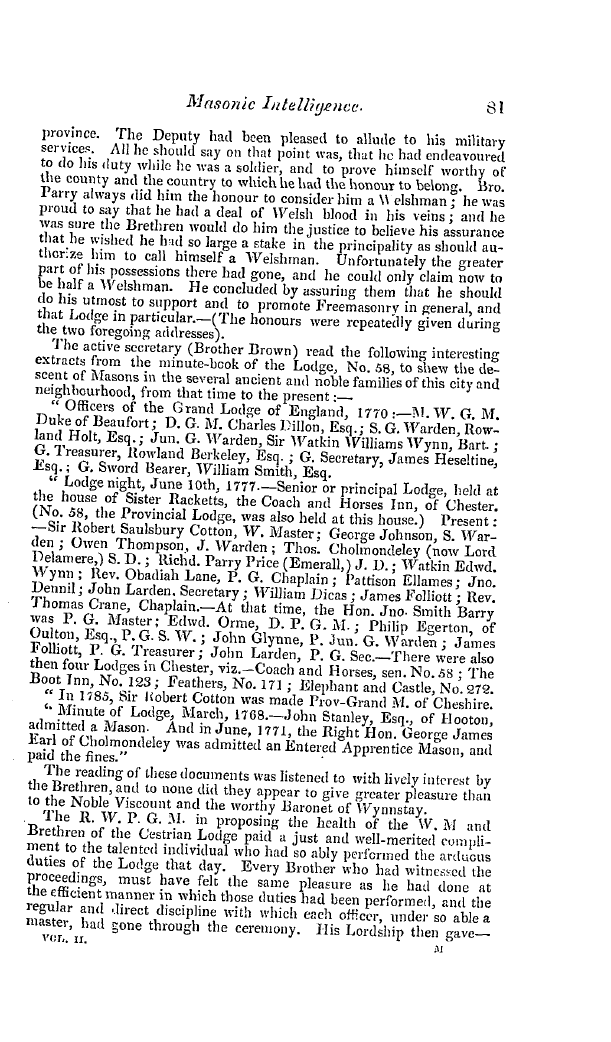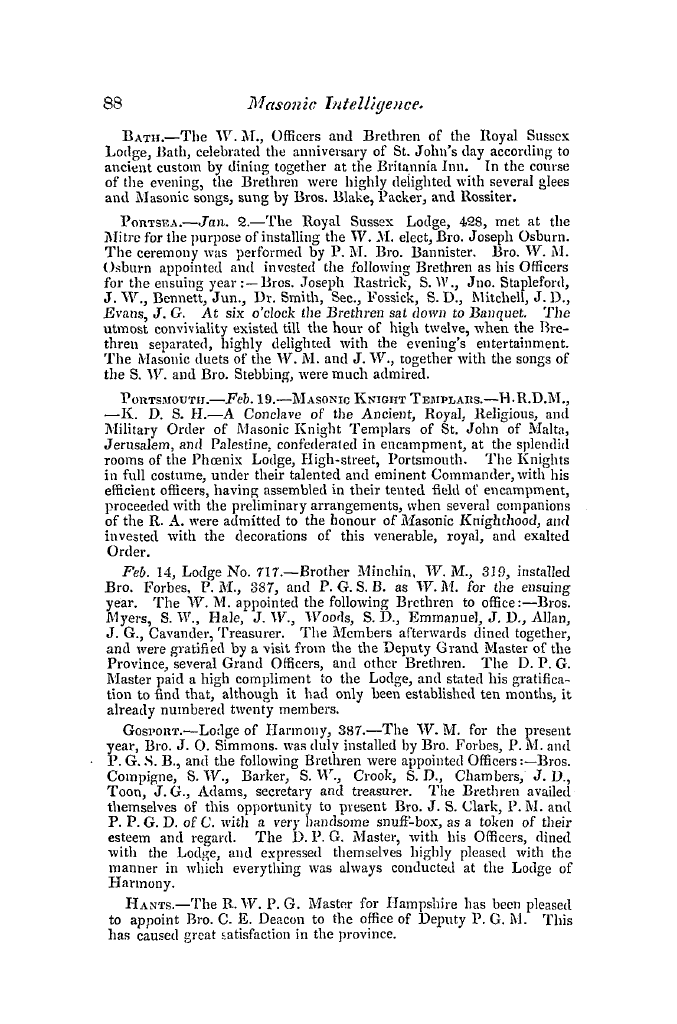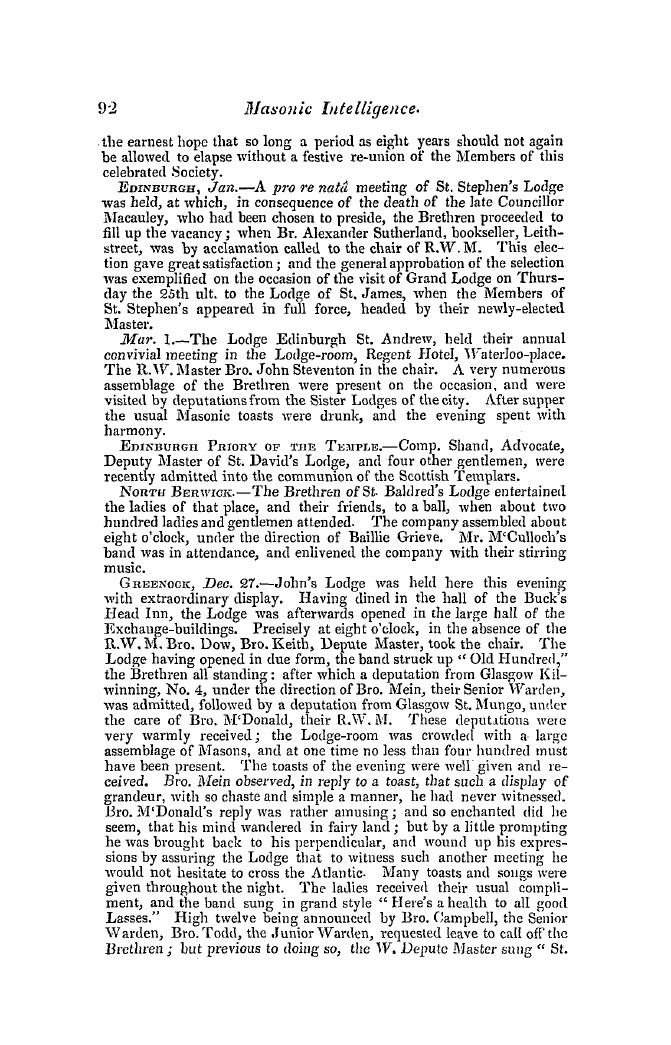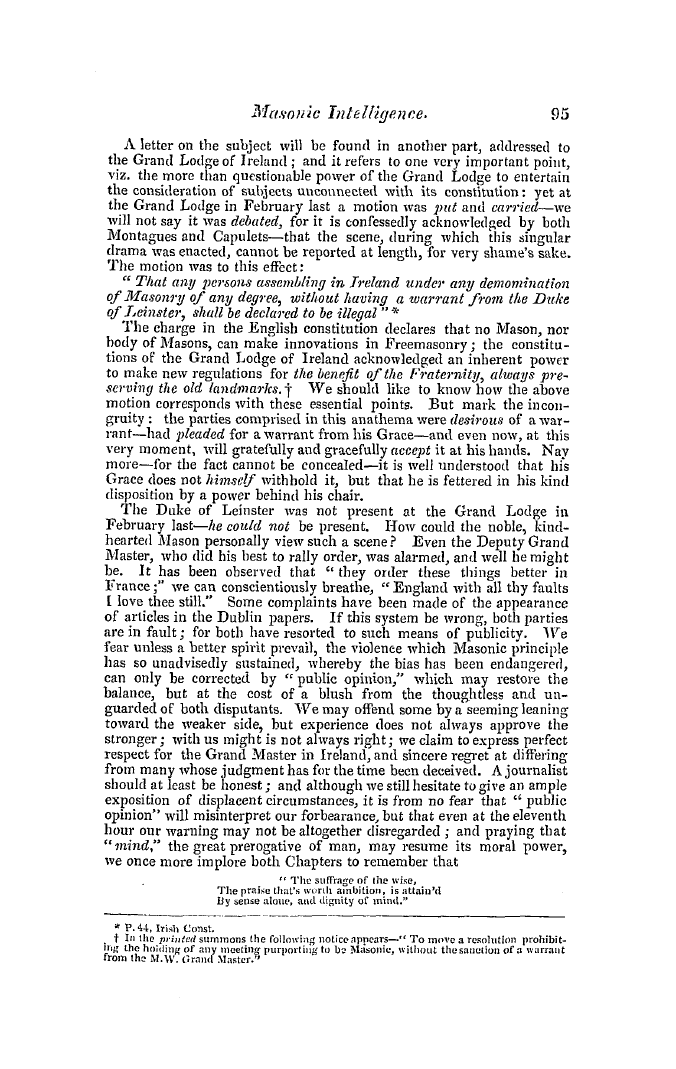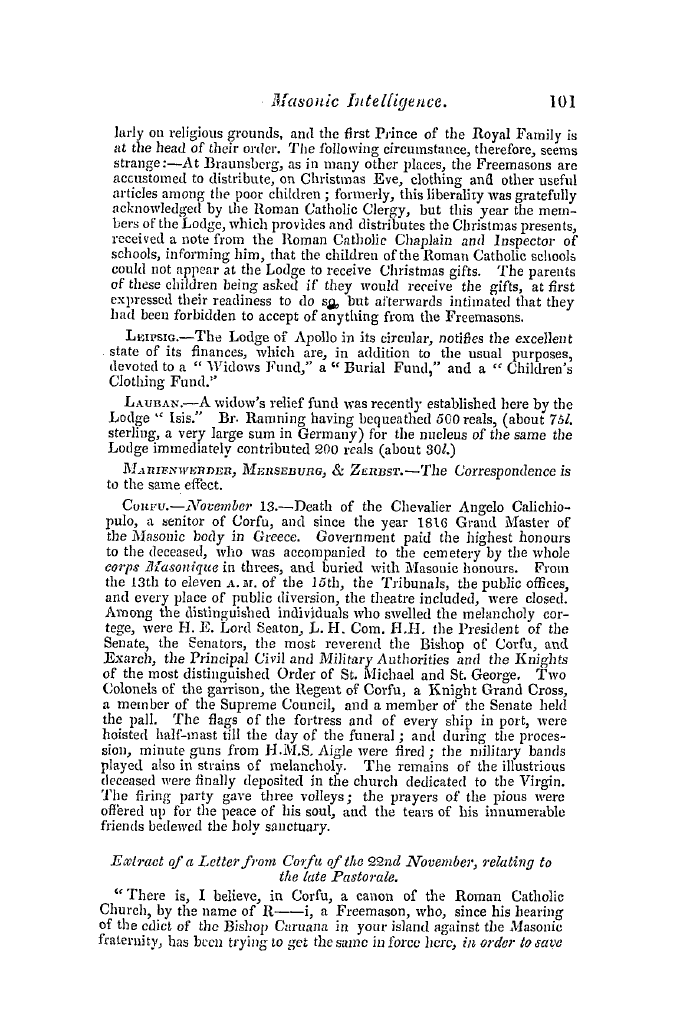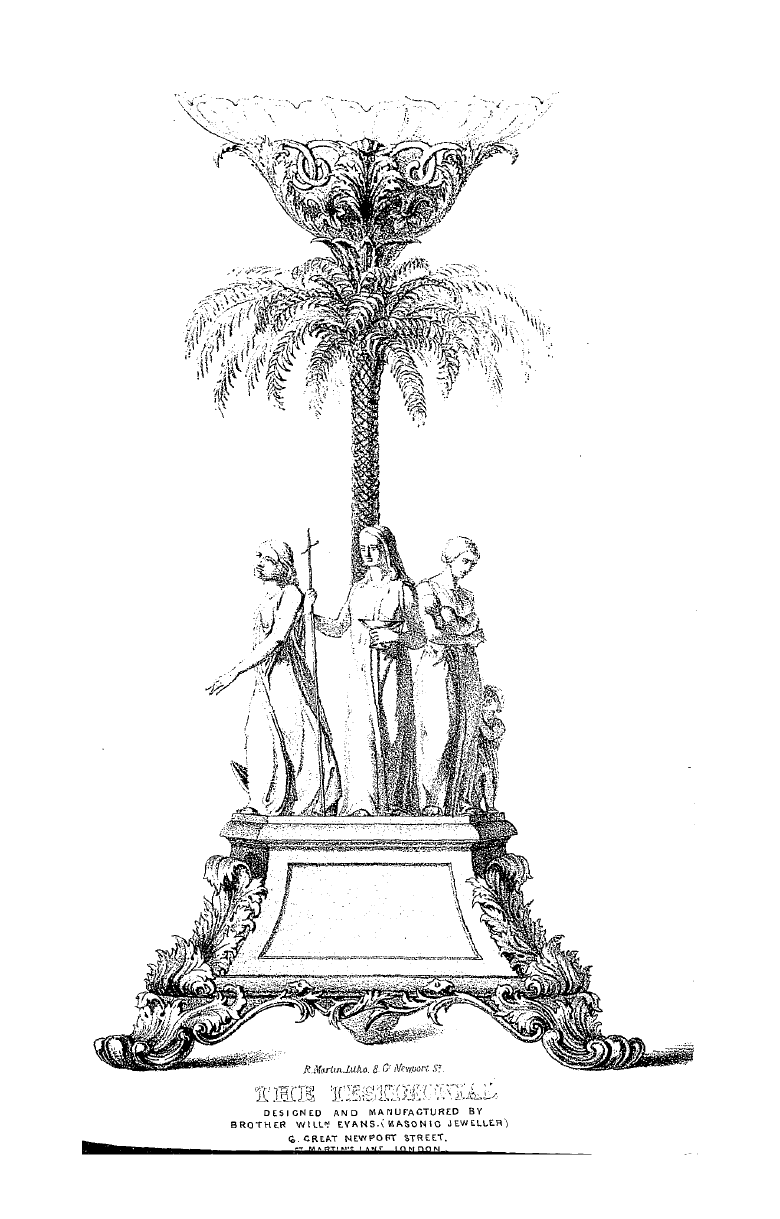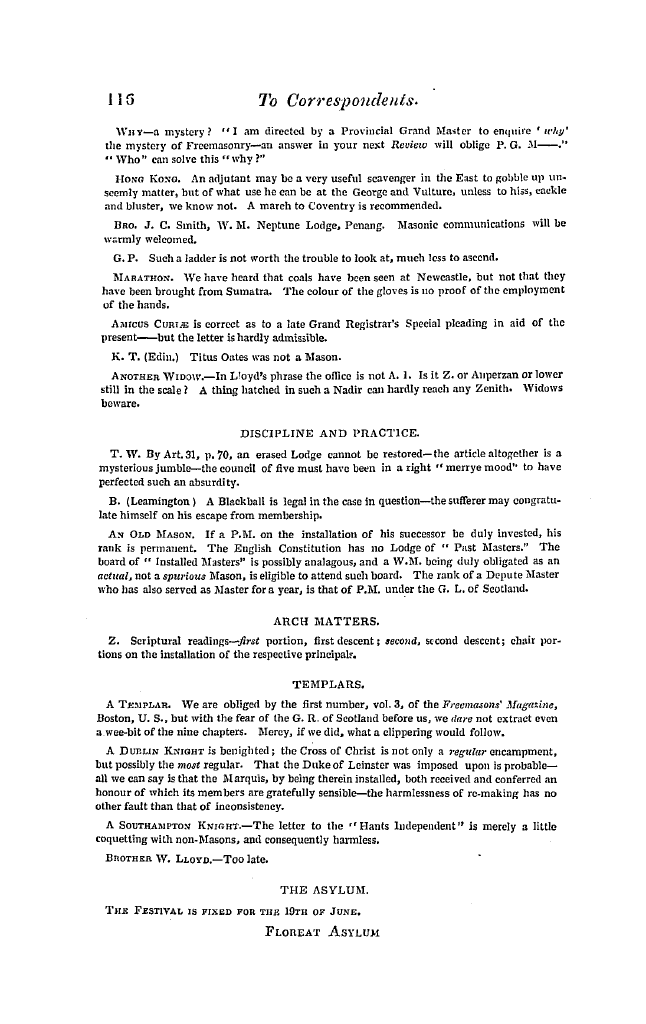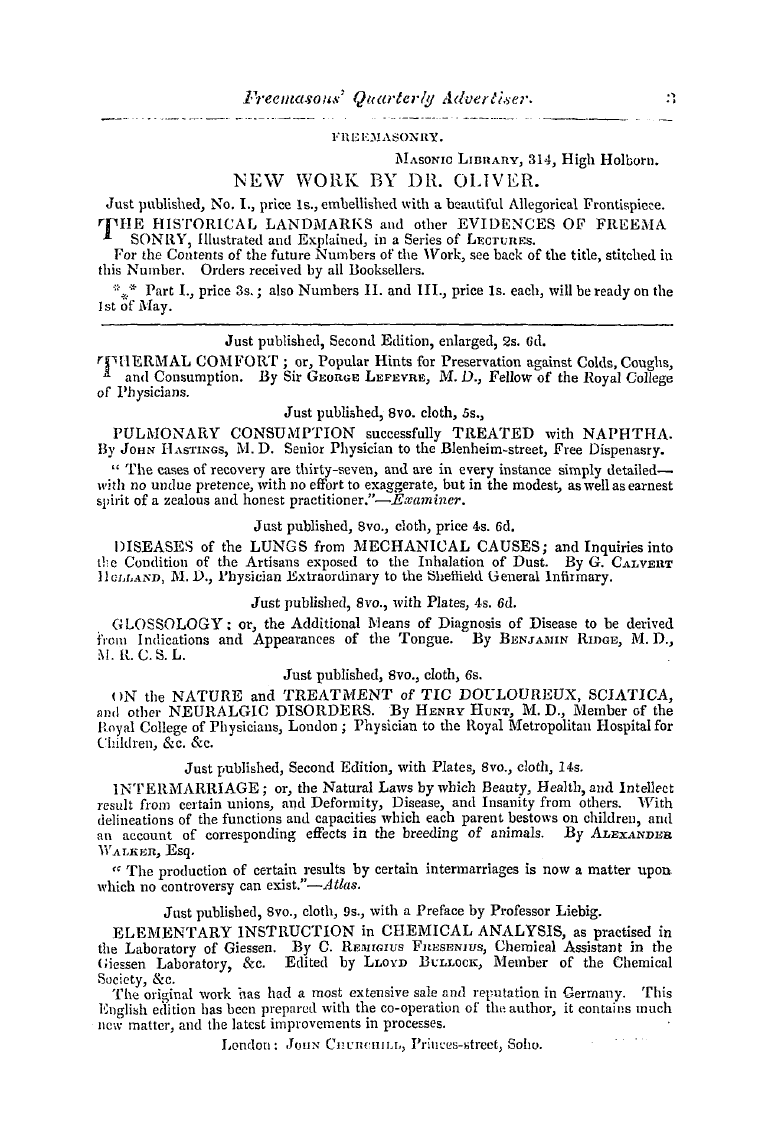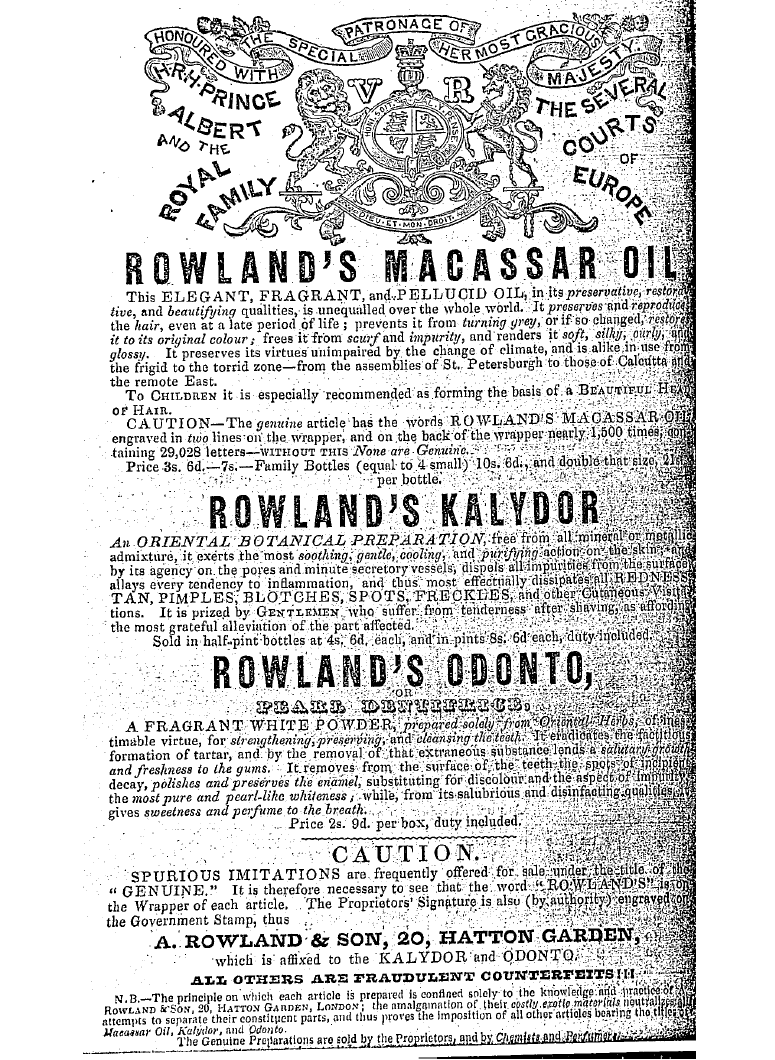-
Articles/Ads
Article ROYAL ORDER. ← Page 7 of 7 Article ROYAL ARCH. Page 1 of 2 →
Note: This text has been automatically extracted via Optical Character Recognition (OCR) software.
Royal Order.
last century by the more showy ancl attractive , and more easily obtained , but less truly Masonic , degree of the French Rose Croix . Has not Scrutator , in the last number , committed a mistake when he says that the Rose Croix was introduced into Ireland in 1787 ? It is said to have been brought there in 1782 by a M . L'Aurent , whose authority , however , to establish an independent Chapter , or Grand Chapter , with powers to confer charters aud deplomas , was at least very questionable . The Order
Royal gives no such privileges ; every other Lodge and Chapter of the Order being dependent on the Grand Lodge . EdUiburrfli , 24 th January , 104-1 .
Royal Arch.
ROYAL ARCH .
To the Editor ofthe Freemasons' Quarterly Review . SIR , —Some of your correspondents will , I am certain , receive the thanks of all Royal Arch Masons if they will turn their attention to the history of that degree as connected with Great Britain and Ireland . When , whence , or by whom was it introduced , or how far back can it be satisfactorily traced ? Some suppose it to have been brought to this country from Palestine
by the Crusaders , perhaps by the Templars ; others that it was instituted about the close of the sixteenth century by those serving Brethren , 'Squires , and , perhaps , Knights , who formed the Masonic degree of Knight Templar . Others assert that it was invented during last century : thus , in " La Maconnerie comparee avec les Reli gions Egyptienne , Juive , et chretienne , " Vol . II . p . 124 , it is said , " Un des reformateurs les plus accredite e s etait le Chev . RamsayEcossaisil crea en 1728
, ; , un nouveau Rite : aux trois grades symboliques , il en ajouta quatre autres , basees sur des nouvelles institutions et doctrines : r L'Ecossais , 2 " Le Novice , 3 ' Le Chevalier du Temple ; enfin le V et le dernier des sept etait Le Royal Arche , sous 1 ' embleme duquel l'E glise est toujours symbolisee : chacun de ces orclres avait differents points . " In all other accounts of Sir John Michael Ramsay ' s Masonic degrees , he is onl y stated to be the inventor ofthe three first ; nor is it easy to comprehend how the
Royal Arch can follow the Kni ght Templar degree * If Ramsay did introduce it into France , it may have been carried by him from England ; but the degree meant is probably that still known in France as part of their " Rite Ecossais , " so called because nearly all the degrees were got up by some of the Scotch followers of Prince Charles Edward , who gained a livelihood by inventing and vending them . But some say that the Royal Arch was unknown in land until
Eng after the French Royal Arch ( commonly called the Royal Arch of E h- or Knights of the Ninth Arch ) was instituted : ancl , lastly , it has been maintained that , in its present form , it was unknown till about 1777 . In a letter written in 1782 , by P . Lambert de Lintot , of the Lodge No . 53 , in London , a Masonic Knight Templar song , containing the
Note: This text has been automatically extracted via Optical Character Recognition (OCR) software.
Royal Order.
last century by the more showy ancl attractive , and more easily obtained , but less truly Masonic , degree of the French Rose Croix . Has not Scrutator , in the last number , committed a mistake when he says that the Rose Croix was introduced into Ireland in 1787 ? It is said to have been brought there in 1782 by a M . L'Aurent , whose authority , however , to establish an independent Chapter , or Grand Chapter , with powers to confer charters aud deplomas , was at least very questionable . The Order
Royal gives no such privileges ; every other Lodge and Chapter of the Order being dependent on the Grand Lodge . EdUiburrfli , 24 th January , 104-1 .
Royal Arch.
ROYAL ARCH .
To the Editor ofthe Freemasons' Quarterly Review . SIR , —Some of your correspondents will , I am certain , receive the thanks of all Royal Arch Masons if they will turn their attention to the history of that degree as connected with Great Britain and Ireland . When , whence , or by whom was it introduced , or how far back can it be satisfactorily traced ? Some suppose it to have been brought to this country from Palestine
by the Crusaders , perhaps by the Templars ; others that it was instituted about the close of the sixteenth century by those serving Brethren , 'Squires , and , perhaps , Knights , who formed the Masonic degree of Knight Templar . Others assert that it was invented during last century : thus , in " La Maconnerie comparee avec les Reli gions Egyptienne , Juive , et chretienne , " Vol . II . p . 124 , it is said , " Un des reformateurs les plus accredite e s etait le Chev . RamsayEcossaisil crea en 1728
, ; , un nouveau Rite : aux trois grades symboliques , il en ajouta quatre autres , basees sur des nouvelles institutions et doctrines : r L'Ecossais , 2 " Le Novice , 3 ' Le Chevalier du Temple ; enfin le V et le dernier des sept etait Le Royal Arche , sous 1 ' embleme duquel l'E glise est toujours symbolisee : chacun de ces orclres avait differents points . " In all other accounts of Sir John Michael Ramsay ' s Masonic degrees , he is onl y stated to be the inventor ofthe three first ; nor is it easy to comprehend how the
Royal Arch can follow the Kni ght Templar degree * If Ramsay did introduce it into France , it may have been carried by him from England ; but the degree meant is probably that still known in France as part of their " Rite Ecossais , " so called because nearly all the degrees were got up by some of the Scotch followers of Prince Charles Edward , who gained a livelihood by inventing and vending them . But some say that the Royal Arch was unknown in land until
Eng after the French Royal Arch ( commonly called the Royal Arch of E h- or Knights of the Ninth Arch ) was instituted : ancl , lastly , it has been maintained that , in its present form , it was unknown till about 1777 . In a letter written in 1782 , by P . Lambert de Lintot , of the Lodge No . 53 , in London , a Masonic Knight Templar song , containing the









